Silent film, Germany 1926
Digitally restored complete version 2010
With new piano soundtrack by Markus Horn
Running time: approx. 150 minutes
METROPOLIS is one of the most important silent films and the foundation of the whole genre of science fiction movies.
With gigantic sceneries, countless extras and groundbreaking effects, director Fritz Lang tells the story of a futuristic society: Privileged, living a life full of luxury in the big city, and workers who have to live in an underground city and serve the huge machines, providing energy for the upper town. But one day, the workers fight back against oppression and start to revolt...
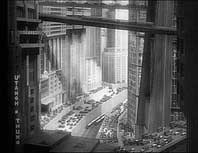
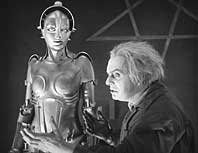
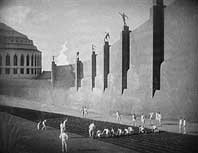
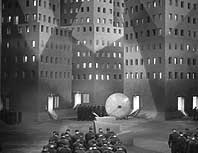
After 17 months of shooting time and cost of the equivalent of EURO 27 million, METROPOLIS came to cinemas in 1927 and was a huge failure. To attract more viewers to the cinemas, the film was quickly re-cut. Important parts of the film were removed and got lost irretrievably.
In 2001 a digitally restored version of METROPOLIS was released with a running time of 120 minutes. In 2009 the missing scenes were found in Argentina. After more than 80 years the complete METROPOLIS finally returned to the cinemas in 2010 and is again in the focus of cineasts around the world.
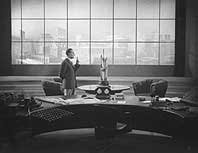
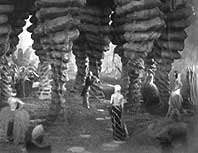
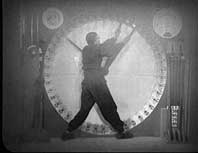
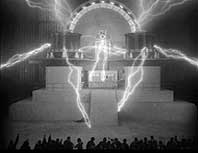
About the film
Metropolis features special effects and set designs that still impress modern audiences with their visual impact – the film contains cinematic and thematic links to German Expressionism, though the architecture as portrayed in the film appears based on contemporary Modernism and Art Deco. The latter, a brand-new style in Europe at the time, had not reached mass production yet and was considered an emblem of the bourgeois class, and similarly associated with the ruling class in the film.
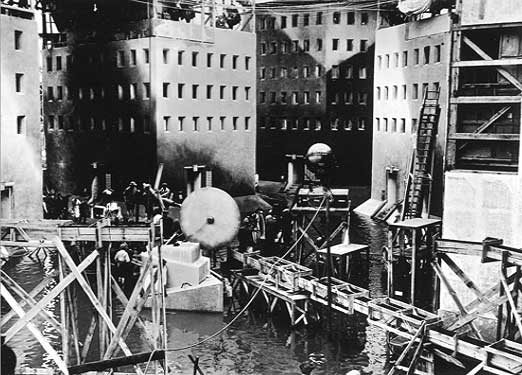
Rotwang's Art Deco laboratory with its lights and industrial machinery is a forerunner of the Streamline Moderne style, highly influential on the look of Frankenstein-style laboratories of "mad scientists" in pop culture. When applied to science fiction, this style is sometimes called Raygun Gothic.
The effects expert, Eugen Schüfftan, created innovative visual displays widely acclaimed in following years. Among the effects used are miniatures of the city, a camera on a swing, and most notably, the Schüfftan process, in which mirrors are used to "place" actors inside miniature sets. This new technique was seen again just two years later in Alfred Hitchcock's film Blackmail (1929).
The Maschinenmensch, the robot character played by Brigitte Helm, was created by Walter Schulze-Mittendorff. A chance discovery of a sample of "plastic wood" (a pliable substance designed as wood-filler) allowed him to sculpt the costume like a suit of armour over a plaster cast of the actress. Spraypainted a mix of silver and bronze, it helped create some of the most memorable moments on film. Helm suffered greatly during the filming of these scenes wearing this rigid and uncomfortable costume, which cut and bruised her, but Fritz Lang insisted she play the part, even if nobody would know it was her.
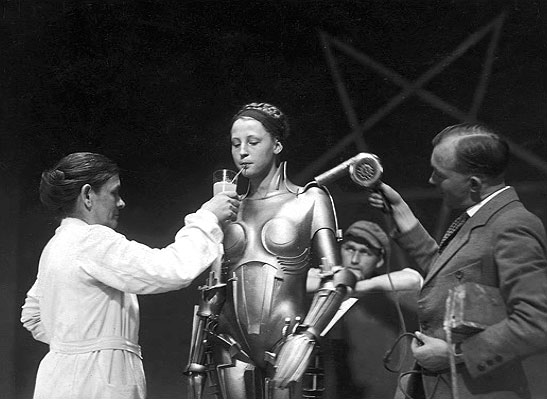
The restored version of the film includes scenes of the cityscape from many angles, including a straight-down view of the Tower of Babel, that were unavailable for years. But no prop designer touched the cars that drive the high, angled overpasses; they are typical cars of the 1920s.
Although it has been reported on numerous historic printed documents that the premiere of the film was in the UFA-Palast in December 1926 where Thea Von Harbou distributed signed novelisations of the movie to the present dignitaries, electronic media spread a new date that seems to fit with the Parafumet distribution. On 10 January 1927, a 153-minute version of the film premiered in Berlin with moderate success. Before it was shown outside Germany, however, the film was cut and re-edited, changing many key elements. American and foreign theatre managers were generally unwilling to allow more than ninety minutes to a feature in their program, during a period when film attendance figures were high. Metropolis suffered as the original version was thought to be too long. Many theatres (including the premiere theater) projected the film at the standard sound film speed of around 24 frames per second, rather than the speed of 16 frames per second, at which the film was made. (The orchestral score for the premiere version was also written to match 24 frame/s.) This affected the rhythm and pace of the original film. As a result of these changes, few people outside of Berlin saw Metropolis as Fritz Lang originally intended; the version shown to European and American audiences in 1928 was disjointed and illogical in parts. The speed at which Lang intended the film to be projected is still debated, as he gave no clear indications. In the United States, the movie was shown in a version edited by the American playwright Channing Pollock, who almost completely obscured the original plot, which was considered too controversial by the American distributors; the Pollock version is considerably shortened. In Germany, a version similar to Pollock's was shown on 5 August 1927.
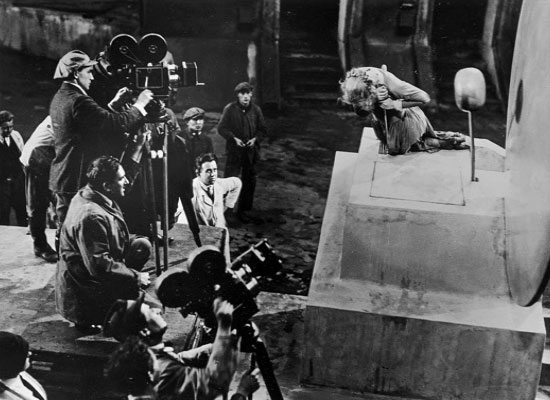
As a result of the edited versions, the original premiere cut eventually disappeared and a quarter of the original film was long believed to be lost forever. In 2001, a new 75th anniversary restoration, commissioned by the Friedrich-Wilhelm-Murnau-Stiftung, was screened at the Berlin International Film Festival. This version, with a running time of 124 minutes, restored the original story line using stills and intertitles to bridge missing footage. It also added a soundtrack using the orchestral score originally composed by Gottfried Huppertz to go with the film. This restoration received the National Society of Film Critics Heritage Award for Restoration 2002. In June 2008, a copy of the original film was discovered in an archive of the Museum of Cinema in Buenos Aires, Argentina. Twenty to twenty-five minutes of lost footage could be added to the 2001 reconstruction, filling most of the gaps. This was a 16-mm copy made of a 35-mm print owned by a private collector, who obtained it from the distributor who brought the original cut to the country in 1927.